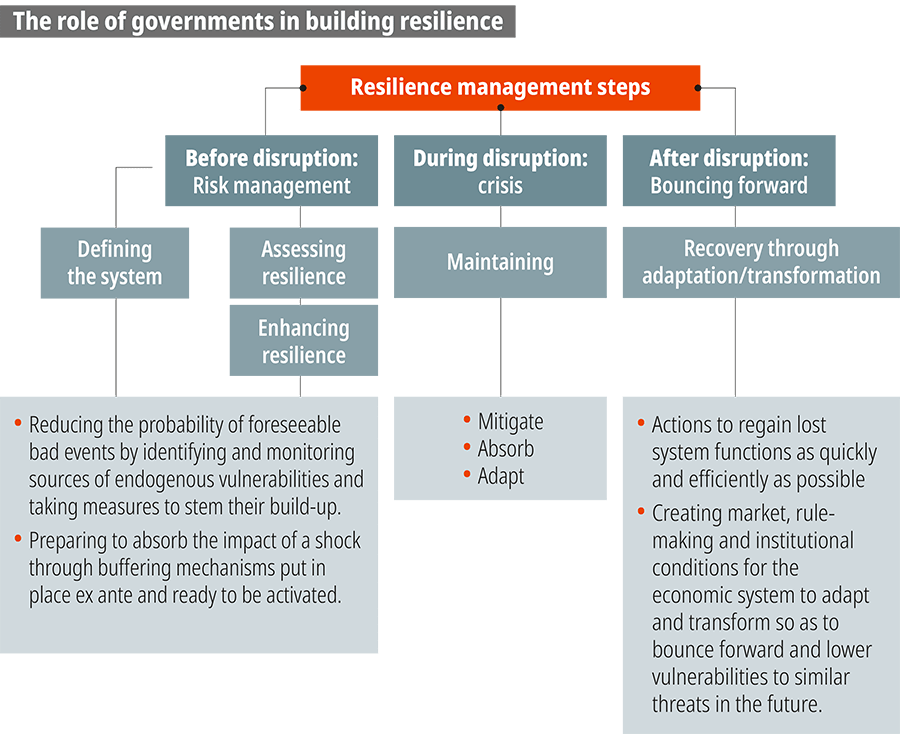Not all risks require government intervention. Supply chains can be affected by minor disruptions such as delays in the delivery of inputs, mistakes in customer orders, and bankruptcies of suppliers. Some accidents and even some natural disasters may be so localised that they do not affect a large number of companies nor lead to temporary disruptions; and those disruptions that do occur can be resolved through the resources and risk management strategies of the firms most directly impacted and of local governments. Private insurance is a mechanism that can also allow firms to recover from small-scale accidents. In view of the limited resources of most governments , the focus should be on the most severe types of risks that could strongly impact supply chains. Such risks include those having contagion effects (whether physical, such as a virus, or financial).
Governments have three broad tasks to undertake, the exact nature of which may vary according to the type of risk. These tasks are to: (i) prevent risks; (ii) detect and anticipate crises; and iii) prepare policy responses. As supply chains are likely to be affected by a large-scale crisis, general risk prevention strategies are relevant and involve many policy makers at different levels of government. Policy makers working in the area of trade and investment also have a potential role in assessing supply chain risks in order to avoid an international crisis situation. Policy makers should also undertake to review systemic issues that private risk management strategies are not in a position to deal with. Determining the role of governments in ensuring well-functioning international supply chains is a challenging task, particularly as these supply chains involve cascading tiers of suppliers in many countries.

